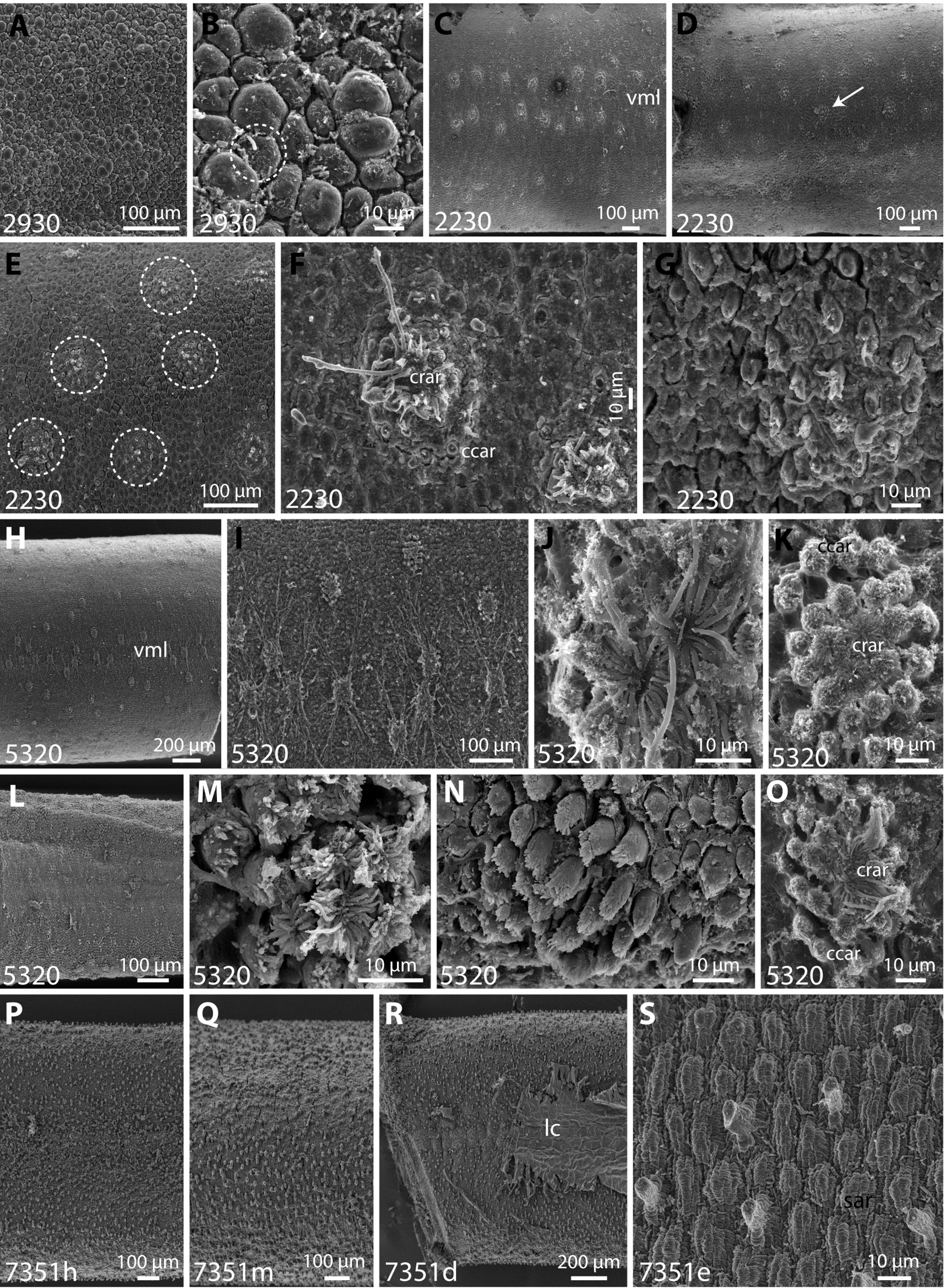
|
||
|
A, B. Pseudochordodes meridionalis, V2930. Cuticular structure in low (A) and higher (B) magnification, encircled in B is a tubercle areole. C–O. Chordodes sp., specimen V2230 (C–G) was formerly designated as holotype of C. pilosus. C. Overview onto the ventral side. Note elevated clusters on both sides of the ventral midline (vml). D. Overview onto the lateral side. Note scattered elevated clusters (arrow indicates one of these clusters). E. Higher magnification shows that the clusters are composed of elevated areoles. F. Clusters of crowned areoles (crar) and circumcluster areoles (ccar) are strongly eroded. Image shows a cluster from next to the ventral midline which includes crowned areoles with long apical filaments. G. Strongly eroded cluster from the lateral body side. H–O. Specimen V5320; H–K female specimen, L–O male specimen. H, I. Arrangement of crowned areole clusters with long filaments next to the ventral midline (vml). J. Two central crowned areoles within a cluster. K. Crowned areoles (crar) surrounded by circumcluster areoles (ccar). L–O. Cuticle and areoles in the male, see female for abbreviations. P–S. Chordodes brasiliensis, different specimens of number V7351. Cuticle shows scattered elevated crowned areoles among simple areoles (sar). Specimen V7351d has part of the cuticle covered by rests of the larval cuticle (lc). |